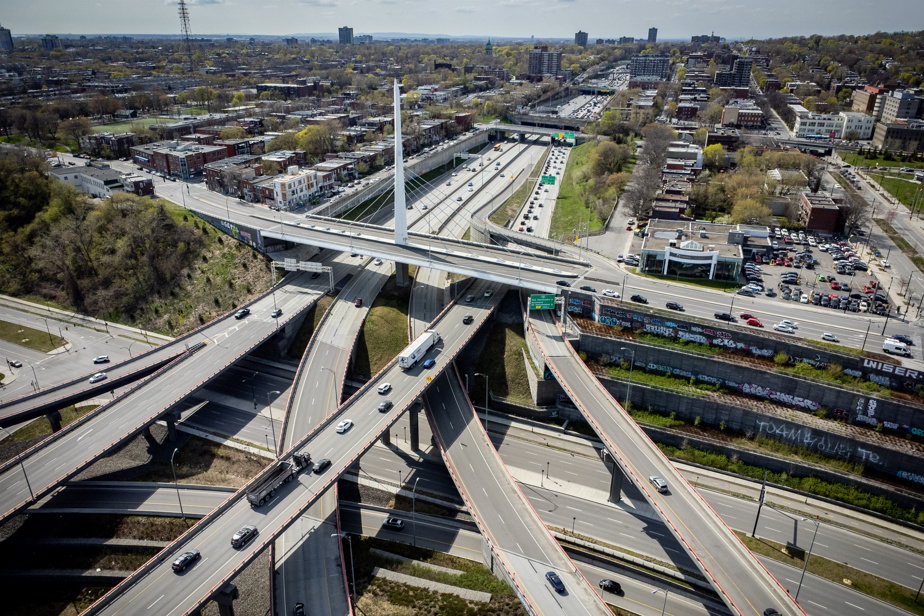Greenhouse gas emissions on the island of Montreal remained below the pre-pandemic level in 2022, shows the most recent inventory of the metropolis, but the current trend will not make it possible to achieve the carbon neutrality target by 2050, recognizes the Plante administration, which is preparing an update of its Climate Plan.
What there is to know
Greenhouse gas emissions on the island of Montreal rebounded in 2022, but remain below the level before the COVID-19 pandemic.
Buildings and road transport are the main sources of emissions.
The metropolis is not yet on a carbon neutrality trajectory for 2050.
The “Montreal community” generated 11.2 million tonnes (Mt) of greenhouse gases (GHG) in 2022, an increase compared to the pandemic years of 2020 and 2021, but a decrease of 9% compared to 2019 .
Montreal’s emissions thus return to their 2015 level, when they had been 11.3 Mt, and are 26% lower than that of 1990, the reference year for its 55% reduction target by 2030.
“We see that this is not a foregone conclusion,” he told The Press the person responsible for ecological transition and the environment on the executive committee of the City of Montreal, Marie-Andrée Mauger, seeing in these results the need to “intensify actions”.
GHG emissions from the island of Montreal follow a similar trend to those of Canada, whose 2022 inventory was published Thursday1.
Buildings and Transportation
Two sectors alone are responsible for almost all of Montreal’s emissions: “fixed sources”, which are essentially buildings, at 47% of the total, as well as transport, at 42.7%.

The resumption of road travel after the COVID-19 pandemic also weighs heavily on Montreal’s balance sheet, emissions from this sub-sector having increased by 15% (438,000 tonnes) from 2021 to 2022, while those of the sub-sector air transport sector increased by 35% (204,000 tonnes) for the same period.
The results nevertheless show “a stabilization of emissions [du transport routier]which is much better than what is happening elsewhere,” observes the director of the Office of Ecological Transition and Resilience of the City of Montreal, Sidney Ribaux.
“We would like to arrive at a downward slope,” he adds, however, believing that it is still too early to say whether this will be observed in the 2023 emissions inventory.
This assessment “shows that the decarbonization of transport is difficult,” judges Andréanne Brazeau, climate policy analyst at Équiterre, estimating that the City of Montreal cannot act alone and that other levels of government must do more in this area.
“Public transportation is not an expense. It is an essential service, added Mme Brazeau. It is not normal that structuring public transport projects take decades to develop. »
Insufficient plan
The measures planned in Montreal’s 2020-2030 Climate Plan are insufficient to achieve carbon neutrality in 2050, modeling carried out by the City shows, that The Press obtained.
They would reduce emissions to 4.1 Mt by mid-century, while the net objective is zero; the intermediate target of 2030, which is 55% below the 1990 level, also appears out of reach.
“It’s clear that we are going to miss the target and this target is not even ambitious enough, it has nothing to do with what science says,” laments the head of Greenpeace Canada’s climate-energy campaign. , Patrick Bonin, recalling that the Intergovernmental Panel on Climate Change (IPCC) advocates for 2030 a reduction in global emissions of 50% compared to their current level2.

The establishment of a “bonus-malus” system to discourage the use of energy-intensive vehicles and the strengthening of decarbonization measures for buildings and heavy industries is to be favored, affirms Mr. Bonin, who underlines in passing that the modeling of the measures shows “a desire for rigor and transparency” from the Plante administration.
Update
The update planned for 2025 of Montreal’s 2020-2030 Climate Plan must precisely serve to “close this gap,” says Sidney Ribaux, by determining which measures can be brought forward or improved.
But the task promises to be difficult, he warns, adding that the City only has the power to influence about half of the emissions.
In Montreal, what remains to be reduced is what is difficult. On a Canadian scale, there is the oil sector which has enormous reduction potential, and which represents 30% of the balance sheet, but we do not have that.
Sidney Ribaux, director of the Office of Ecological Transition and Resilience of the City of Montreal
Even if they will not be enough on their own, the 46 actions of the Climate Plan are all being implemented and are already bearing fruit, underlines Marie-Andrée Mauger. “There is still some good news. »
More than 180,000 of the 500,000 trees to be planted by 2030 have already been planted and the surface area of protected areas has reached 7.6%, approaching the target of 10%, she illustrates.
But the share of solo cars in transport has only decreased by 0.6%, while the target for 2030 is 25%, and the proportion of registered electric vehicles is only 4.2%. far from the target is 47%.
1. Read “Greenhouse gases: Canada’s emissions drop in 2022”
2. Read “New IPCC report: three years to act”
Learn more
-
- 4,387,000 tonnes
- Reduction in emissions necessary by 2030 in Montreal to reach the reduction target of 55% below the 1990 level, or 39.2% of 2022 emissions
Source: City of Montreal
- 15,094,000 tonnes
- Greenhouse gas emissions from the island of Montreal in 1990
Source: City of Montreal
